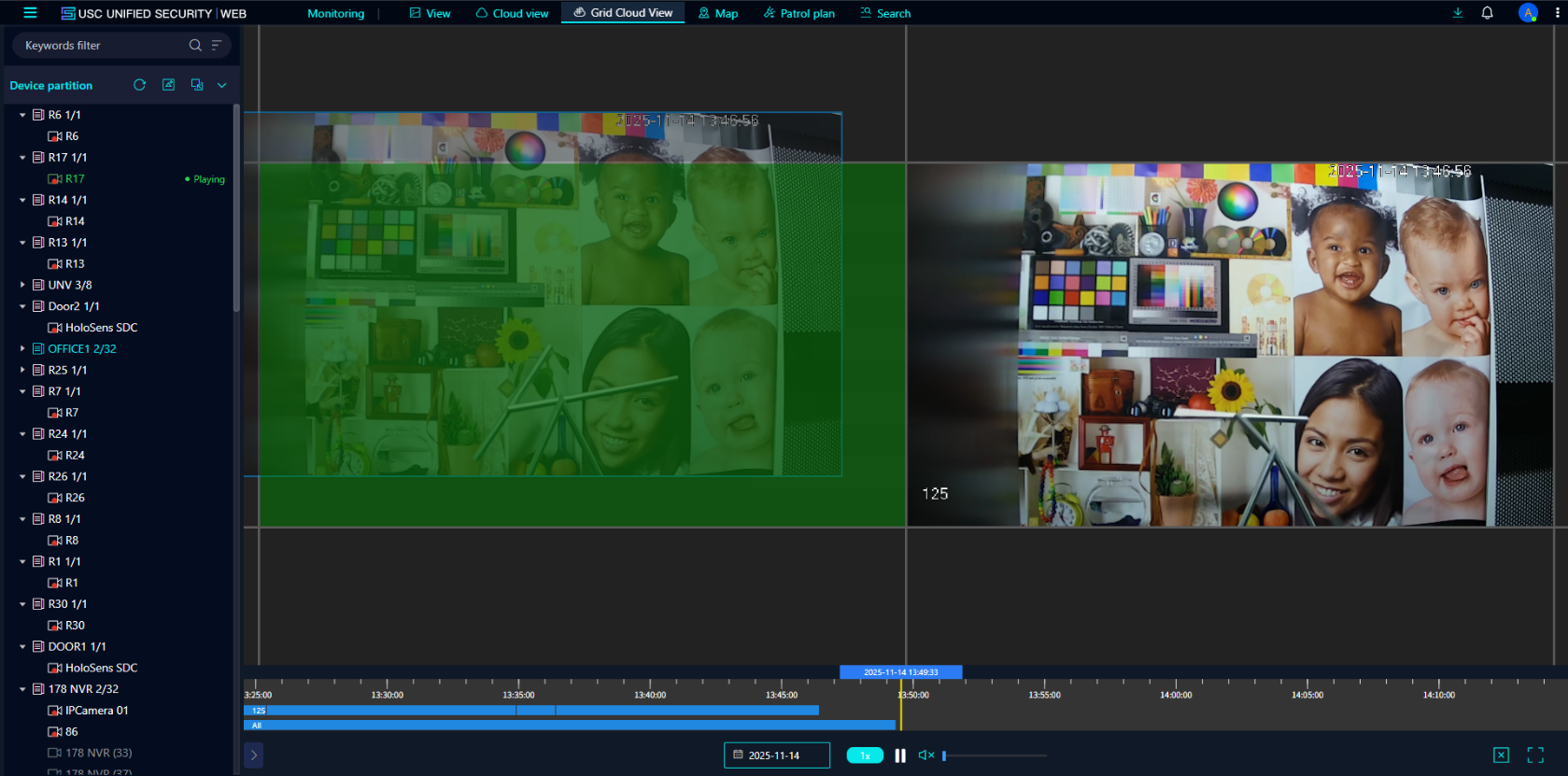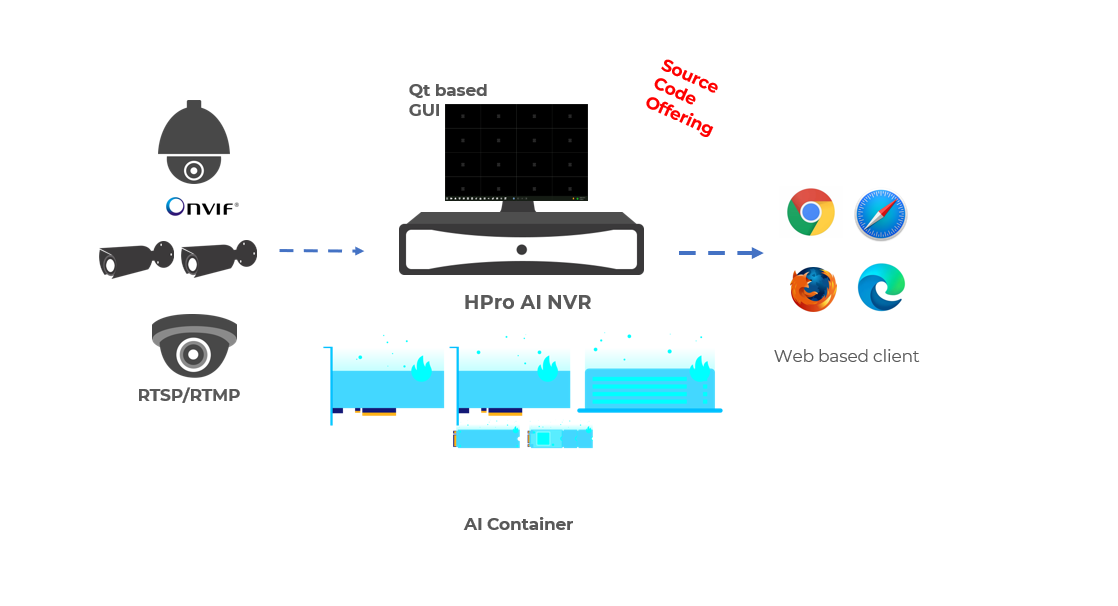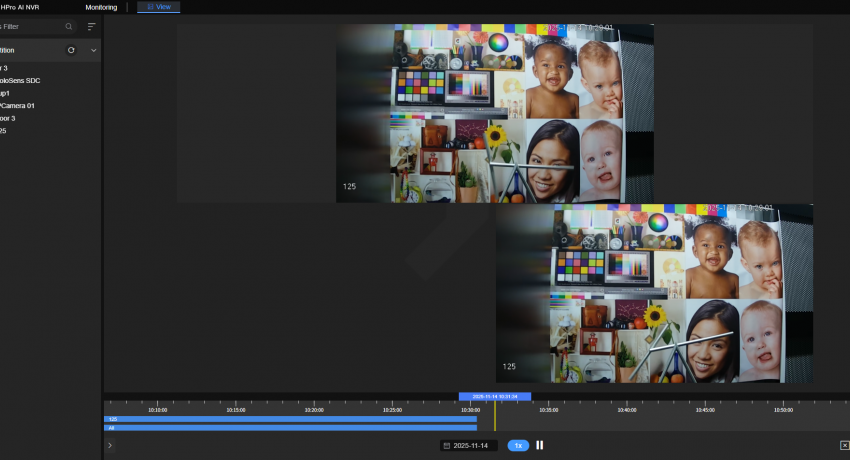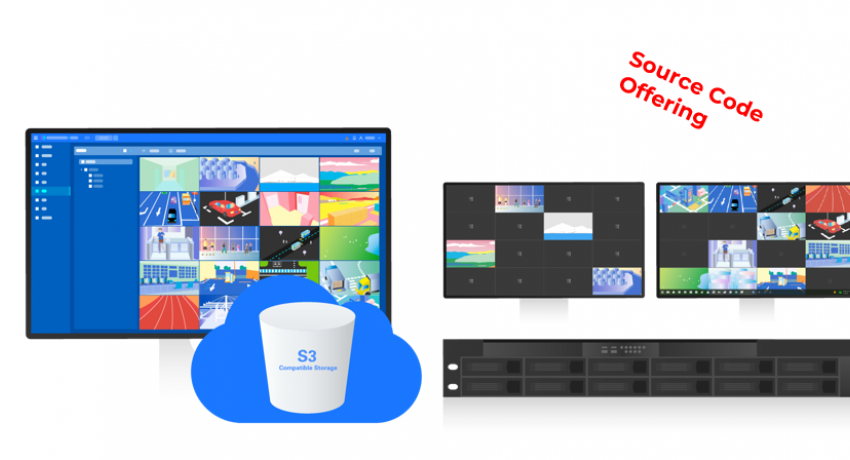TAV1 hardware transcoder
With the popularity of B/S architecture video playback, more and more IoT projects have adopted B/S architecture, and recent versions of Chrome also support H265 decoding technology. The H5S video platform also supports H265 decoding technology. Refer to the "Real-time Video -> RTC WS Playback Mode Switching" section of the H5S video platform manual.
DD2C Camera Module
The camera module is based on the Novatek NT98528 solution and has a built-in USC Cloud DD2C module. This module actively initiates a secure link to the USC Cloud to achieve device control, real-time video playback, and alarm transmission. All data in this technology is transmitted using encryption to achieve point-to-point security.
USC 2.1 released with S3 Compatible Video Storage and Synchronous Playback
2.1 1112 2025
Fixed: GB28181 sub domain device export import can't reqest catalog issue.
Fixed: GB28181 sub domain Notify sometime chinese words issue.
Added: Add S3 object storage
Added: Add local object storage
Added: Add grid view in web.
Added: Add web based synchronous playback.

HPro NVR alpha version is ready
https://community.linkingvision.com/t/hpro-nvr-alpha-version-is-ready/47
Download hpro-alpha0.1.1113.25-win64-release.zip
https://drive.google.com/drive/folders/1hwNMfBtdllL21SCdktCEkSafwhk1PrHa?usp=drive_link
unzip and run hpro.bat
Unified AI Container
The AI era has arrived. From large models to small ones, it has penetrated every industry. With it comes a wide variety of AI accelerators, including PCIe, M.2, and SoC models. Currently, mainstream inference is based on Python, but Python's efficiency is not ideal, especially in cost-sensitive areas that require real-time processing, such as video processing.
To enable AI model engineers to focus on the model, we have launched AI Container. AI Container is completely based on C++ and compatible with AI accelerator APIs from multiple manufacturers.
HPro AI NVR with source code offering
Based on H5S and USC we launched HPro AI NVR. With Unified AI Container, significantly reduce the cost of AI deployment.
The first phase supports PCIE cards including NVIDIA GPU/Atlas 300V/BM1684x PCIE, supported M.2 acceleration modules including Hailo8 M.2/AX650n M.2/AX8850 M.2, and supported SOCs including BM1688 SOC/RK3588 SOC/AX650n SOC.
Unified AI Container

HPro AI NVR
HPro AI NVR is equipped with a powerful Unified AI container C/C++ framework, can support most AI accelerator.The system use HTML5 built-in GPU based H264/H265 video decoding technology, then can improve operator efficiency; The system use cross OS/CPU platform technology and then provide flexibility to deploy on x64/Arm architecture.
Support ONVIF camera integration with Profile S, also support NVR with Profile G/T, support H264/H265 encoding and G711/AAC audio.
Support token base API authorization, support HTTP/HTTPS. Video streaming encrypted with HTTPS.






